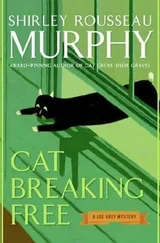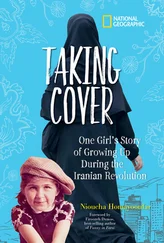In two of the converted bedrooms on the second floor, Uncle Rulon opened a birthing center that was staffed by his wife Sharon, who became the midwife for the Salt Lake Valley’s FLDS community. The delivery room was makeshift and had barely changed since it had been a bedroom in the original house. With blue shag carpeting on the floor and the lower half of the walls, it was wholly unlike anything you’d expect to see in a regular hospital. There was no sink or other running water in the room, and the midwife had to use an elongated sink in a nearby bathroom to wash the newborns. An adjacent bedroom was used as a recovery room for the mothers and their babies.
Though the birthing center provided only basic medical equipment and services, it offered members one distinct advantage over hospitals: husbands could be present when their plural wives gave birth. Before the birthing center, men could not accompany their plural wives to give birth because it risked attracting attention from outsiders. Such was the case when my mother gave birth to her first daughter, Rachel. Mother Audrey had accompanied Mom to the hospital, with Dad relegated to the waiting room.
Before Alta Academy opened its doors, children in the Salt Lake area had attended the public schools. My older brothers and sisters who grew up then had gone to the elementary school just up the road. Mothers enrolled their children under fictitious names to hide their status as plural wives.
On that first day of school I was incredibly excited, but it didn’t take me long to figure out that the drive to school was fraught with the same tension that permeated my home life. Since Mother Audrey worked as a teacher at Alta Academy, it was her responsibility to get us into Dad’s big blue Chevy Suburban, which we all called “Big Blue,” and shepherd us to class on time. Of course, rounding up nearly a dozen kids was no easy task. My sister Teressa was always ready first. Eager to get a move on, she’d go outside to the car and wait for the rest of us to file out. After about ten minutes she was back in the house, screaming at everyone to hurry up. Then she was back at the car, where she’d honk the horn wildly to let us know that she meant business.
Inside the house chaos reigned as we shoveled oatmeal into our mouths and scrambled to get dressed. The drive to Alta Academy took about twenty minutes in good weather, but there was often fog and snow. On some days, the ride felt like an eternity to me, sitting squished between my brothers in the third row of Big Blue. There was usually a lot of commotion in the truck, with everybody trying to talk over everybody else. At times, fights would break out and Mother Audrey would step in to take charge. She didn’t like us horsing around when she was trying to concentrate on the road, and she wasn’t afraid to tell us.
Mother Audrey differed from Mom in the way she handled discipline. She had a clear idea of how things should be run, and her preoccupation with order pervaded every aspect of her life, including her appearance. While Audrey’s eyes glasses would shift within the bounds of popular fashion, everything else about her style remained constant. The long skirts and blouses she wore during my childhood had become a kind of uniform, and she never changed her hairstyle: one wave on each side of her head, with the rest swept up in the back. During the rides to school, Mother Audrey tried to impart her beliefs about how we should conduct ourselves both at home and in school. Often her lectures upset my sisters. Sometimes they’d argue back. Other times they’d fester in silence, telling Mom about the confrontation when they got home.
Part of what made the car rides so tumultuous was that this was one of the only times during the day that we were alone with Mother Audrey. Because our mother was concerned over the way that Mother Audrey reprimanded us, she tried to keep us separated from her. If we wandered into Audrey’s room, we would be shooed out. By that time, to ease the pressure, Audrey rarely interacted with our side of the family, spending much of her time in her bedroom with her own children. After school, Mom and Dad would hear about the day’s drive and inevitably the friction would grow, frequently culminating in an angry blowup in which Mom defended her children against being deemed as the only source of the trouble.
Every school day began with a class called Devotional, taught by Warren Jeffs. The meeting room on the ground floor, which was used as a religious hall for Sunday and priesthood meetings, was enormous, half a football field long, but it still could not accommodate all of the Alta Academy students for Devotional, so the fourth-through twelfth- graders met in there, while students in the lower grades listened over the PA system from their classrooms. Every student, no matter his or her age, was expected to take notes, which were always reviewed and graded. The content of the Devotional was mostly religious teachings, with readings and homework assignments from the Book of Mormon.
Most of the students had to enter through the door at the very back of the room, and the age and grade level determined the section you sat in. This explained Teressa’s morning panic; at thirteen she’d have to walk all the way to the front with the older kids, directly in Warren Jeffs’s line of view. If she walked in late, she would meet one of his signature stern glares—no one wanted to receive one of those. We were all expected to treat Uncle Warren with the highest respect; he was not only our school principal but also the son of the prophet.
Uncle Warren would start every morning by saying, “I am only here to do the prophet’s will,” a statement that always made it seem as though the lesson that followed had been dictated by his father and thus was the word of God. As students, we all strove to gain Warren’s approval. Having his good opinion and acknowledgment meant much more than the small prizes he would sometimes hand out for good deeds and high marks. Life at school could be miserable if you were not in Uncle Warren’s good graces.
One night in the spring of first grade, our family was eating a thick, mushy spaghetti dinner—Mother Audrey was frugal with the sauce—when my father revealed some exciting news: our family was blessed to have a daughter marry the prophet. My sister Rachel was twenty-two years old, and Dad had received word that she was to be married to Uncle Rulon, who was eighty-one at the time. It seemed that all the prettiest girls were chosen to hold the honor of marriage to the prophet, but no one would dare say that out loud. My oldest sister was no exception. Rachel was lucky to inherit our mother’s rich dark hair, slender figure, and wide, bright smile.
In addition to Rachel’s marriage being a tremendous honor for our family, it was also incredibly exciting to me that we would be invited to attend the wedding ceremony at Rulon Jeffs’s sprawling thirteen- plus-bedroom residence in Salt Lake. For us, Uncle Rulon’s tan brick house was considered a mansion. It was constructed of top-of-the-line materials and equipped with expensive appliances, and it had an enormous garage to accommodate his fancy Cadillac. We would be able to witness the ceremony in the prophet’s living quarters on the main floor, which was treated as his private sanctuary.
The wedding took place on April 30, 1993. Because it was the prophet getting married, the marriage was “sealed” by my father, who had been temporarily ordained to fill the role usually played by the prophet. Not only was Rachel’s marriage important for religious reasons, it also afforded my sister many opportunities that other women in the community didn’t have. As a wife of the prophet, she was elevated in status, viewed as a worthy angel on earth. She was well provided for and had access to credit cards and cash. Even though it appeared to us that Uncle Rulon’s wives were lucky and blessed to be members of his family, like all FLDS women, they were still considered property of their husband and the priesthood. They were expected to keep sweet and be submissively obedient.
Читать дальше












